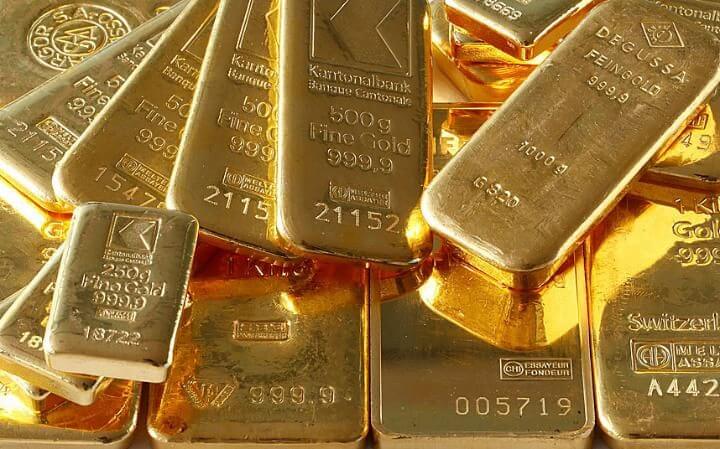Table of Contents
By whatever process gold may have been extracted from its ores, it is necessary to melt the crude bullion and cast it into bars so that its value may be ascertained, and that it may be put into a form convenient for transportation and sale. The name “ bullion ” may be conveniently restricted to the precious metals, refined or unrefined, in bars, ingots, or any other uncoined condition, whether contaminated by admixture with base metals or not. It is, however, often applied to coin, and the appellation “ base-bullion ” is given to the pig-lead or to copper bottoms or pig-copper, which have been obtained in smelting operations, or as the result of melting worn-out amalgamated copper plates. Such materials may only contain a few parts per thousand of gold and silver, the main portion consisting of base metals. The treatment of base-bullion, however, properly belongs to metallurgy of argentiferous lead and copper, and the descriptions given in this chapter apply to bullion which is valuable almost entirely on account of the gold and silver contained in it.
The operations to which the retorted metal, gold precipitate or bars from the chlorination mills, are subjected may be summarised as follows:
- The bullion is melted in crucibles (a rough refining operation being usually effected at the same time) and cast in ingot-moulds.
- Assay-pieces are cut from the cast ingots or dipped from the molten metal before pouring, and assays are made on these, by which the value and composition of the bars are ascertained.
- The bars are then usually sold to the refineries, where the base metals are eliminated and the gold and silver separated by “parting,” and cast into bars separately. Both before and after the parting it is sometimes necessary to subject the bullion to further refining operations. The bars of gold and silver thus obtained, being of a high degree of purity, are in a condition to be used for minting, or for the various industrial purposes to which they are applied.
Rough unrefined gold is frequently sold to the refineries attached to the American and Australian mints, in the state of retorted metal, &c., without being previously melted and assayed, the producing mills relying on the good faith of the officials at these establishments.
What Elements does Gold Bullion Contain
Bullion varies greatly in composition, and gold may be present in any proportion up to nearly 100 per cent. The gold obtained in some chlorination mills is of a high degree of purity and rarely contains much silver. This precipitated gold, however, generally makes brittle bars owing to the presence of a few parts per thousand of lead, bismuth, antimony, and other metals of high atomic volume. From some chlorination mills the gold is far from pure, owing to various causes, which include lack of care. If ferrous sulphate is used as the precipitant, the precipitate may contain large quantities of ferric hydrate from which some iron is reduced in the crucible, and if sulphuretted hydrogen is used and the gold precipitated as sulphide, it is contaminated with all the heavy metals contained in the solution, copper, iron, and lead being most often encountered. These may amount to several per cent. Retorted metal is of very different degrees of fineness, according to the nature of the ore and the course of treatment. Placer gold is usually finer than that derived from lodes, containing a smaller percentage of silver, while the nature of the material treated and the methods used in placer operations are not favourable to the contamination of the bullion with base metals, which vary in amount only from 0 to 20 parts per thousand, and seldom approach the latter figure.
Battery-retorted gold is usually much less pure than placer gold, the percentage of base metals being in particular much higher, a state of things due in great part to the difference in the method of treatment. The bullion from pan-amalgamation is less fine than battery gold, containing less gold, more silver, and more base metals. Retorted gold often contains large quantities of iron, and copper is also a common impurity.
Bullion from the cyanide process is sometimes of very low standard, containing as little as 10 per cent, of gold. The predominating impurities are zinc and lead.
Gold Melting Furnace
Gold Refining Methods
Casting Gold Bullion Ingots
Separate Gold and Silver by Melting
